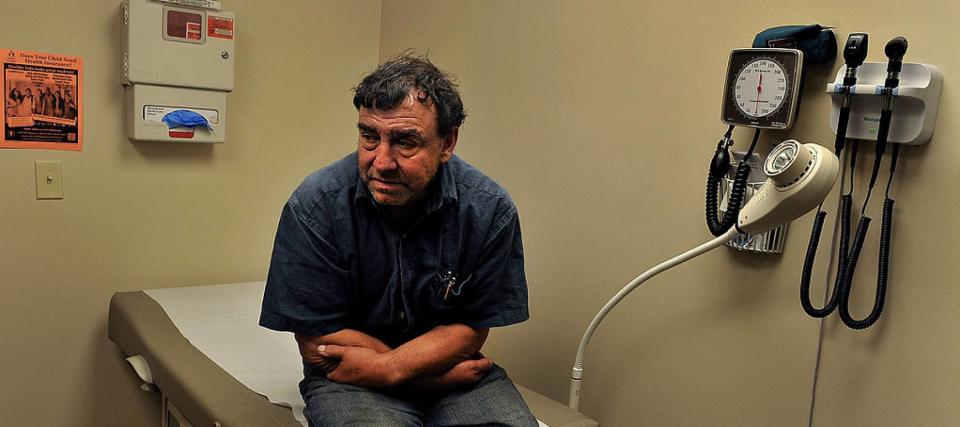Private equity giants are ‘creating and collecting’ $220B in medical debt from 14M Americans, watchdog warns

If you’ve recently endured surgery or some illness that required hospitalization, here’s something else to make you feel ill: Private equity has fueled a medical debt spiral in pursuit of profit, according to an industry watchdog.
A just-released report from the Private Equity Stakeholder Project reveals that medical debt now impacts 14 million people and totals at least $220 billion. Remarkably — sickeningly, even — this averages $15,714.29 per person or roughly one-quarter of the median American salary of $59,436 per the U.S. Bureau of Labor Statistics.
Don't miss
Car insurance premiums in America are through the roof — and only getting worse. But 5 minutes could have you paying as little as $29/month
Lock in juicy quarterly income through this $1B private real estate fund — even if you’re not a millionaire. Here’s how to get started with as little as $10
5 minutes could get you up to $2M in life insurance coverage — with no medical exam or blood test
And more than ever, consumers are feeling the squeeze to pay up. As PE ups its investment in medical debt collection (also known by the benign term “revenue cycle management”), it has adopted some fairly aggressive tactics. It cuts both ways as well since they swell the debt in the first place.
PEs have expanded the use of medical credit cards, interest-bearing payment plans and strategic partnerships with banks “to indebt patients who cannot afford to pay a full medical bill at one time,” the report states.
Then, they contract firms such as the Orwellian-named FinThrive, a SaaS (software as a service) platform that uses machine learning “to examine the ‘probability of receiving payment on the claim,’ which the company [contends] will help providers ‘prioritize which opportunities to pursue first,’” the report states.
In other cases, the PEs buy up RCMs and assume a more direct role as the collection pitbull. In March 2022, private equity firm WarburgPincus partnered with Berkshire Partners to acquire a stake in the technology-enabled RCM company Ensemble Health Partners. Here you’ll sniff the reek of corporate speak, as a WarburgPincus press release exulted: “Ensemble partners with nearly 300 hospitals across the United States to improve financial outcomes and patient experiences.”
Financial outcomes for whom? Or, perhaps, what investor?
A private equity stampede
The stampede to PE investing represents a market megatrend common investors typically have a dim awareness of at best.
Nor do a majority have direct access to it.
You must be an accredited investor, which the U.S. Security and Exchange Commission defines as a person or couple with a joint net worth of at least $1 million, excluding a primary residence. You also need to have made $200,000 (individual) or $300,000 (couple) for the last two years, and “reasonably expect” to do the same in the current year. Curiously, the agency calls this “financial sophistication,” though with or without the nanny and butler they don’t say.
While global fundraising has slowed since 2021, private equity still [manages a staggering(https://www.mckinsey.com/industries/private-capital/our-insights/mckinseys-private-markets-annual-review) $13.1 trillion in assets, according to McKinsey’s Global Private Markets Review 2024. And PE far outperforms the stock market. It returned 15.2% annually over the last 20 years through December 2023 versus 9.7% for the S&P 500, FS Investments reports based on PitchBook data.
Read more: These 5 magic money moves will boost you up America's net worth ladder in 2024 — and you can complete each step within minutes.
How to keep the debt sharks at bay
In response to all this, private equity firms are in full-on spin mode. Rather than own the self-inflicted problem, the industry trade group American Investment Council submitted a letter to the U.S. Senate “highlighting private equity’s limited but crucial role in supporting America’s health care system.” The missive, released within days of the PESP report, also claimed that “private equity is not large enough to influence any sector.”
But they will still press your pocketbook if you let them. Here are some strategies to head off medical debt before you drown in it.
Start an HSA. For many, the health savings account remains lesser known than flex spending options but its superb tax benefits are worth noting. They’re exempt from federal income tax — a 22% savings if you’re in that tax bracket — and open to full-time employees and individuals, allowing maximum annual deductions of $7,500 for self-coverage and $15,000 for families. The latter number roughly equals the per-person debt average mentioned above.
Shop around for medical care. Because there’s no consistency in how hospitals or providers charge for procedures, the numbers fluctuate wildly. A vasectomy at Northern California Vasectomy costs $850, while Silicon Valley Urologist charges between $1,250 and $1,539, claiming their price is “moderate.” Perhaps — but it’s also at least 68% higher.
Select your insurance carefully. Often in a bid to save upfront, people take on cheaper health insurance without studying the deductible thresholds and which conditions may not be covered. It’s also worth noting that some companies more aggressively deny claims and employ byzantine customer service protocols. As of September, Forbes ranks Kaiser Permanente the best health insurance company with a five-star rating, while UnitedHealthCare has the worst claims denial rate of 32%, according to ValuePenguin. Take the time to shop around and compare quotes and save yourself stress and financial strain down the road.
What to read next
Medical debt is the leading cause of bankruptcy in America — just 3 minutes could protect you from disaster
Baby boomers bust': Robert Kiyosaki warns that older Americans will get crushed in the 'biggest bubble in history' — 3 shockproof assets for instant insurance now
The price of home insurance has skyrocketed to an average of $2,285 a year. But smart homeowners can save around $482 a year – here’s how
This article provides information only and should not be construed as advice. It is provided without warranty of any kind.